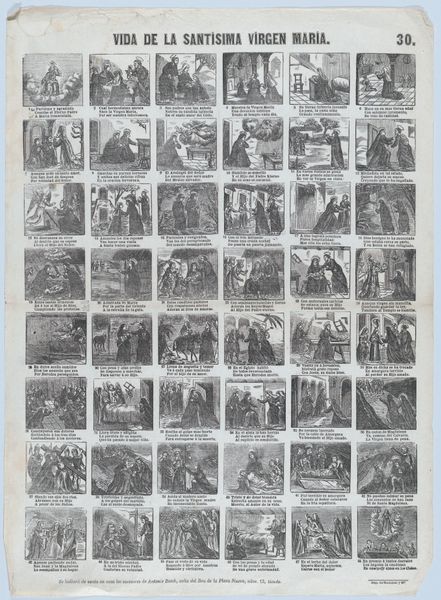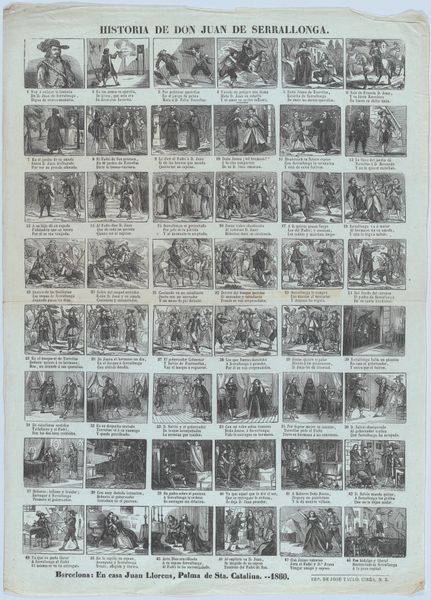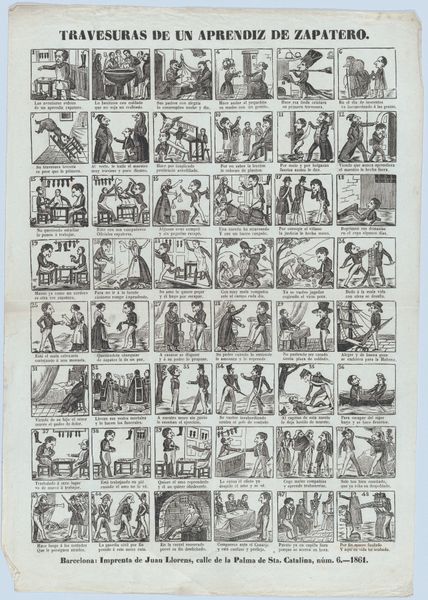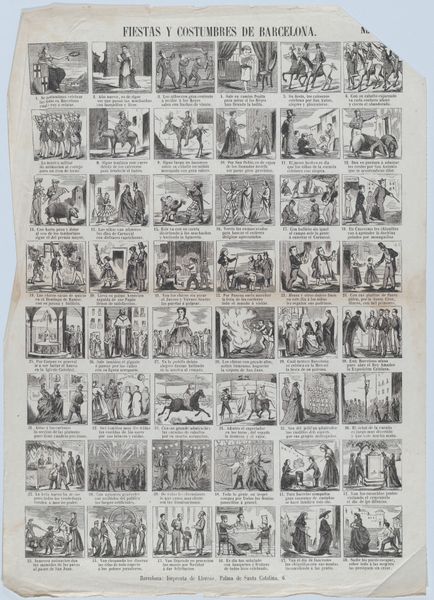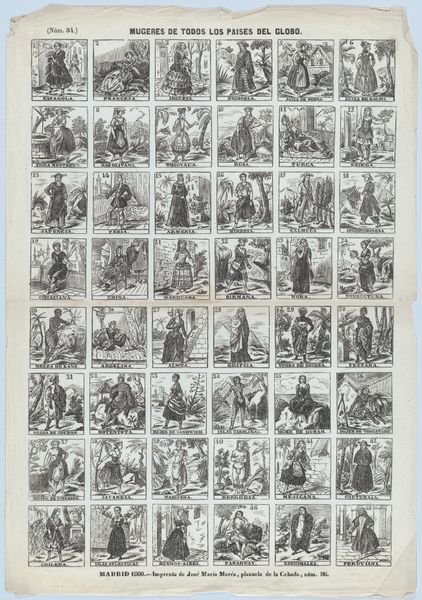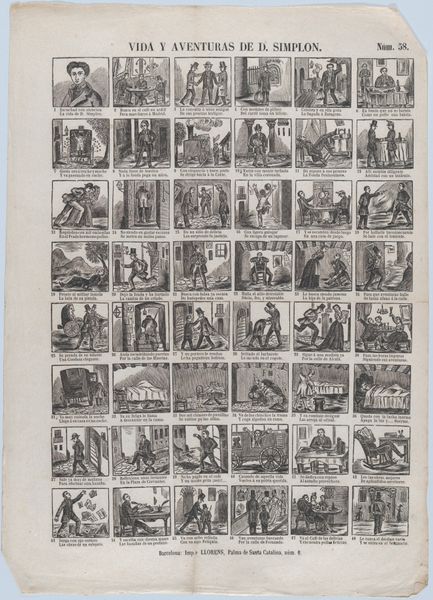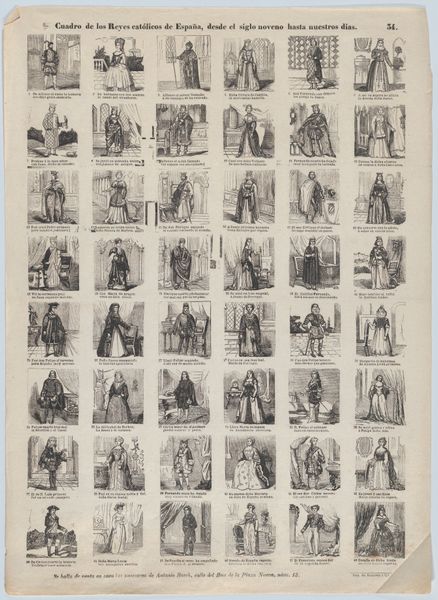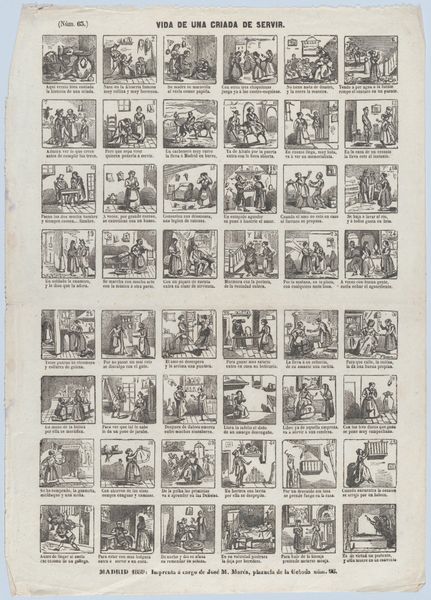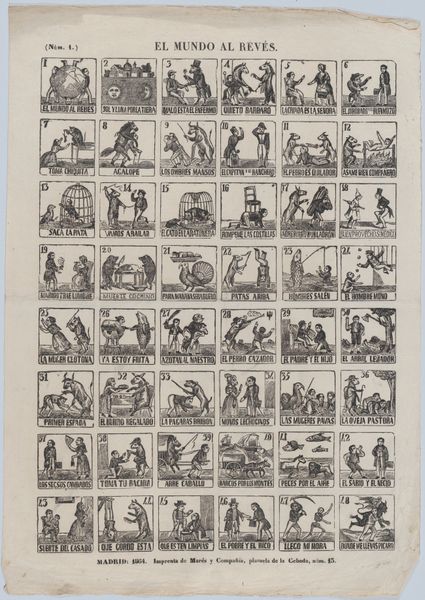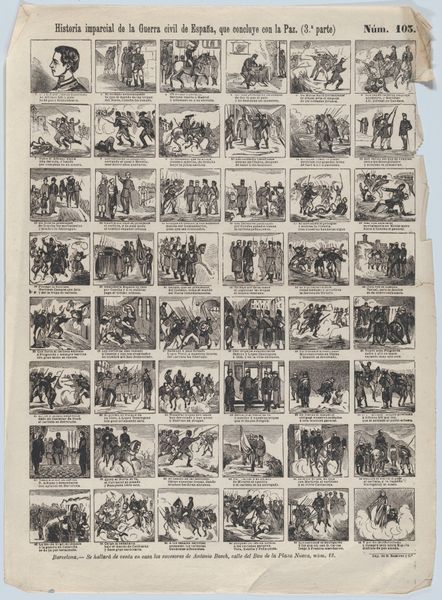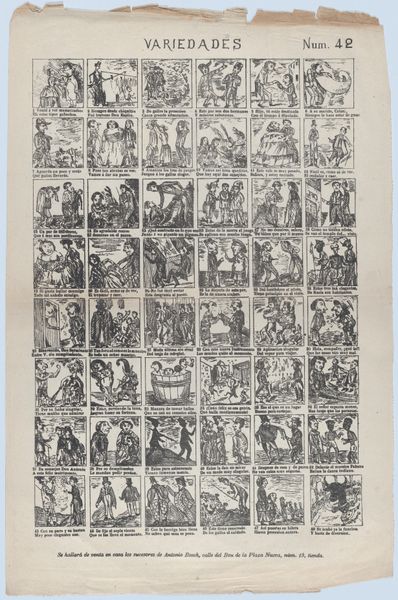
Broadside with 48 scenes of the life of the Virgin 1868
0:00
0:00
drawing, print, ink, woodcut, engraving
#
drawing
#
medieval
#
narrative-art
#
muted colour palette
# print
#
figuration
#
ink
#
woodcut
#
line
#
history-painting
#
engraving
#
virgin-mary
Dimensions: Sheet: 17 1/2 × 12 5/8 in. (44.5 × 32 cm)
Copyright: Public Domain
Editor: This is *Broadside with 48 scenes of the life of the Virgin*, a print made in 1868 by José Noguera. It’s fascinating how the artist compressed an entire life story into so many small panels! The details, though tiny, really capture the expressions and settings. I wonder, looking at the overall structure, what do you see in this work, focusing on its form and visual relationships? Curator: Precisely, consider the deliberate arrangement of the forty-eight vignettes, each framed and sequentially ordered. Note the dominance of the grid structure; it provides an architectural framework. Further, examine the artist’s economy of line and form within each miniature scene. The visual relationships established through the consistent use of dark ink against a light background create rhythm and a cohesive viewing experience, despite the varied content of each panel. Editor: So, the grid structure provides an intentional framework, but I noticed some slight inconsistencies with the sizes and positioning of these panels. Does that suggest anything? Curator: An interesting point. Deviations from perfect symmetry within the grid serve to highlight the hand of the artist, emphasizing the constructed nature of the work and hinting at deeper structural possibilities. The muted colour palette is another strong signifier here: the composition gains interest from its subtle and restricted colour palette which reinforces a serious quality of tone. Editor: So even slight visual imperfections contributes meaning to the work's intent? Curator: Indeed. The piece can be seen not only as a narrative sequence but as a self-referential object where the arrangement and handling of materials are essential aspects of its message. Considering that the main focus is how each panel's components balance each other and integrate in relation to one another lets the viewer in on an exercise in formalism and composition that adds weight to what seems a purely representational and illustrative artefact. Editor: I see! Thanks for helping me see the architecture of it.
Comments
No comments
Be the first to comment and join the conversation on the ultimate creative platform.
